I always thought of New Orleans as just being filled with street parties—open containers and beads being thrown. (I think I've seen too many Girls Gone Wild TV commercials.) I wasn't terribly interested in that.
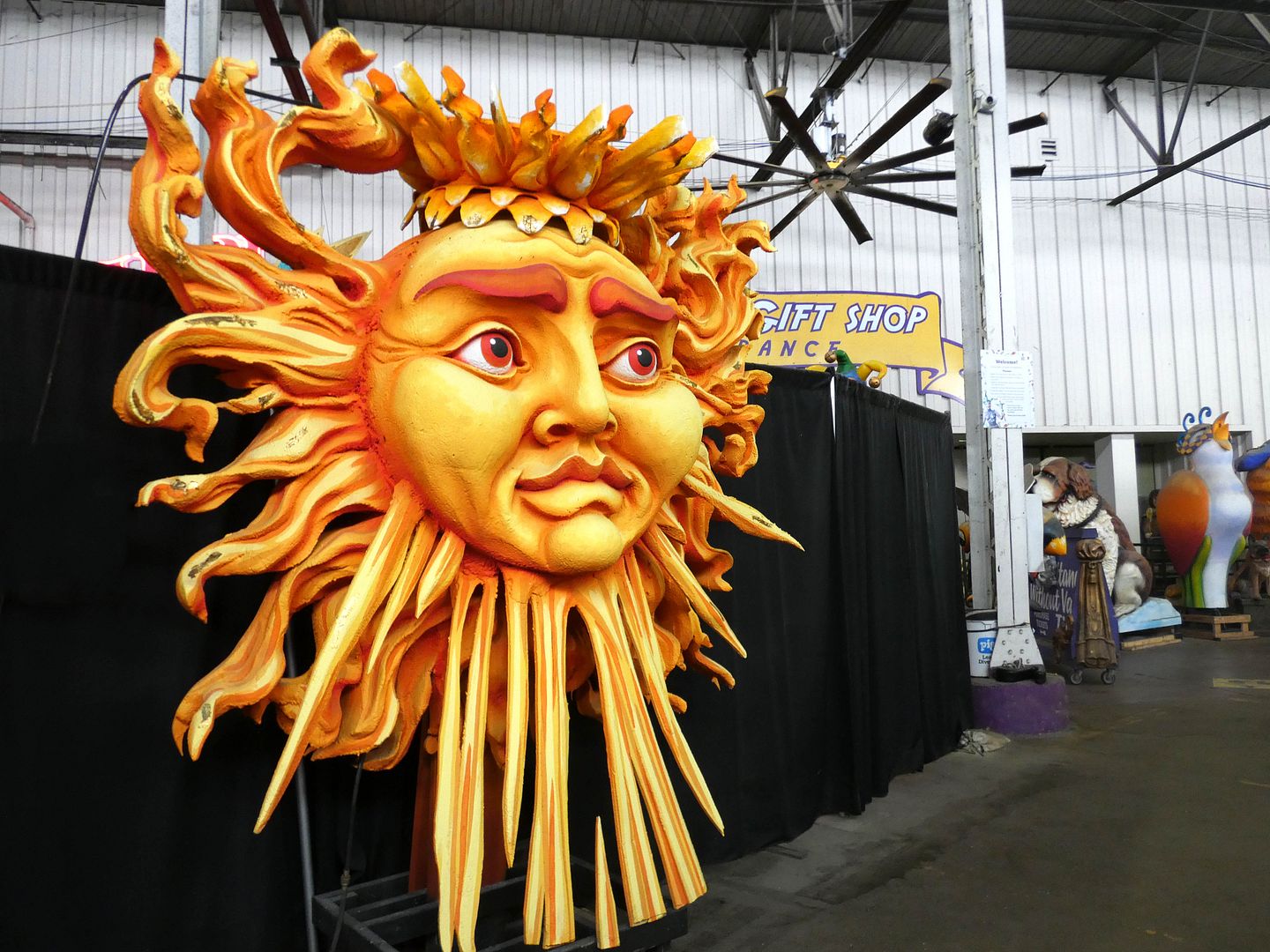
Above: The "Sun King," a.k.a. King Louis XIV, the namesake of Louisiana
It never occurred to me that the Mardi Gras celebration would involve big, elaborate parade floats—the type I would be interested in, considering my love for the Rose Parade and its floats.
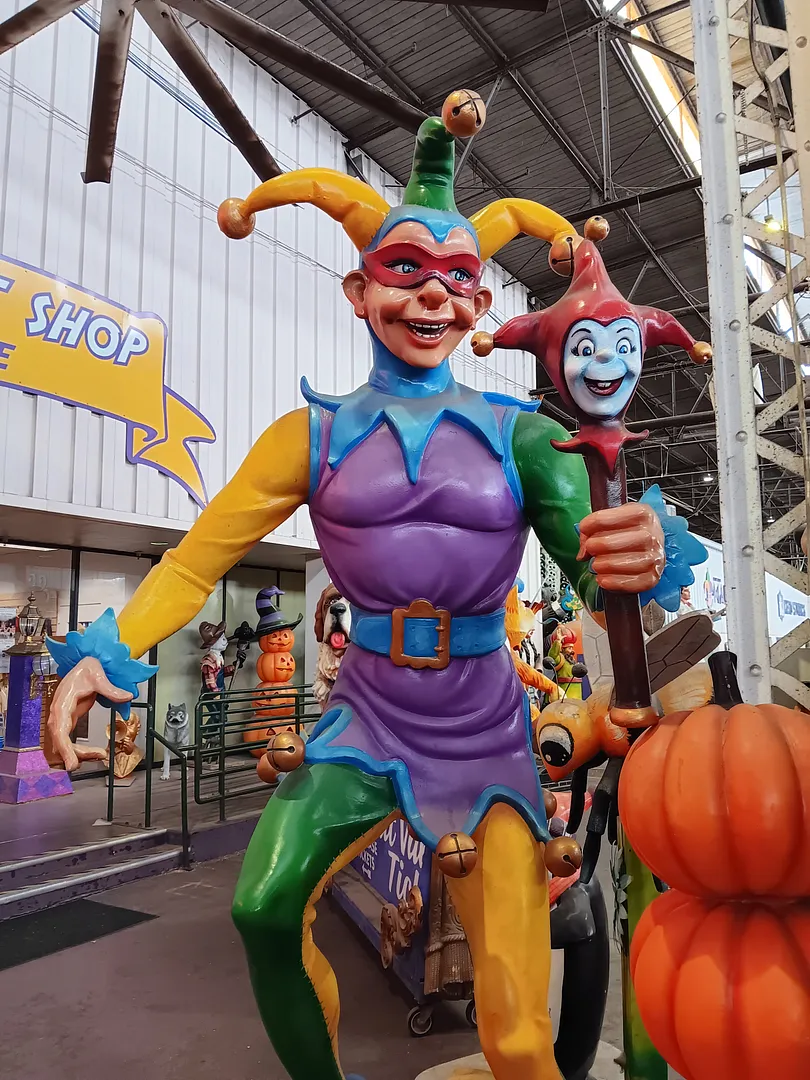
Above: One of the "house floats" from the 2021 "home" parade during the COVID-19 pandemic
But then a friend heard I had a trip planned to NOLA and immediately suggested, "You know, you can probably visit where they build the floats!"
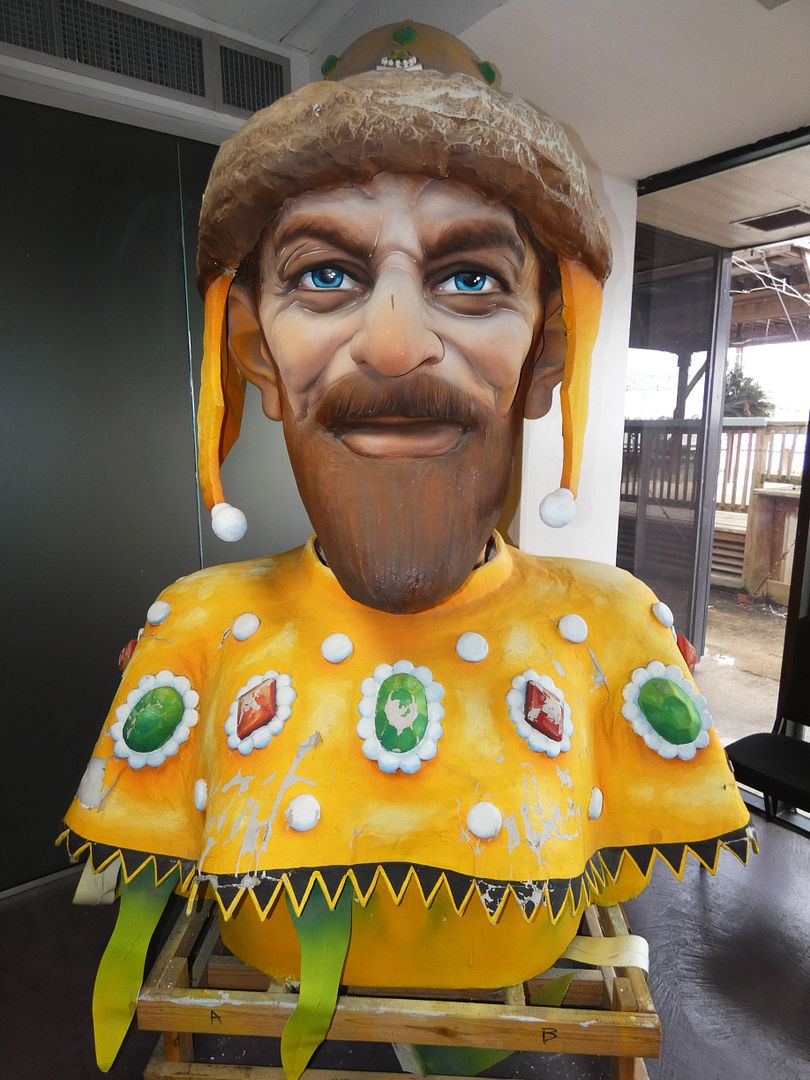
Say no more. A visit to Mardi Gras World—home of float builders Kern Studios—skyrocketed to the top of my to-do list.
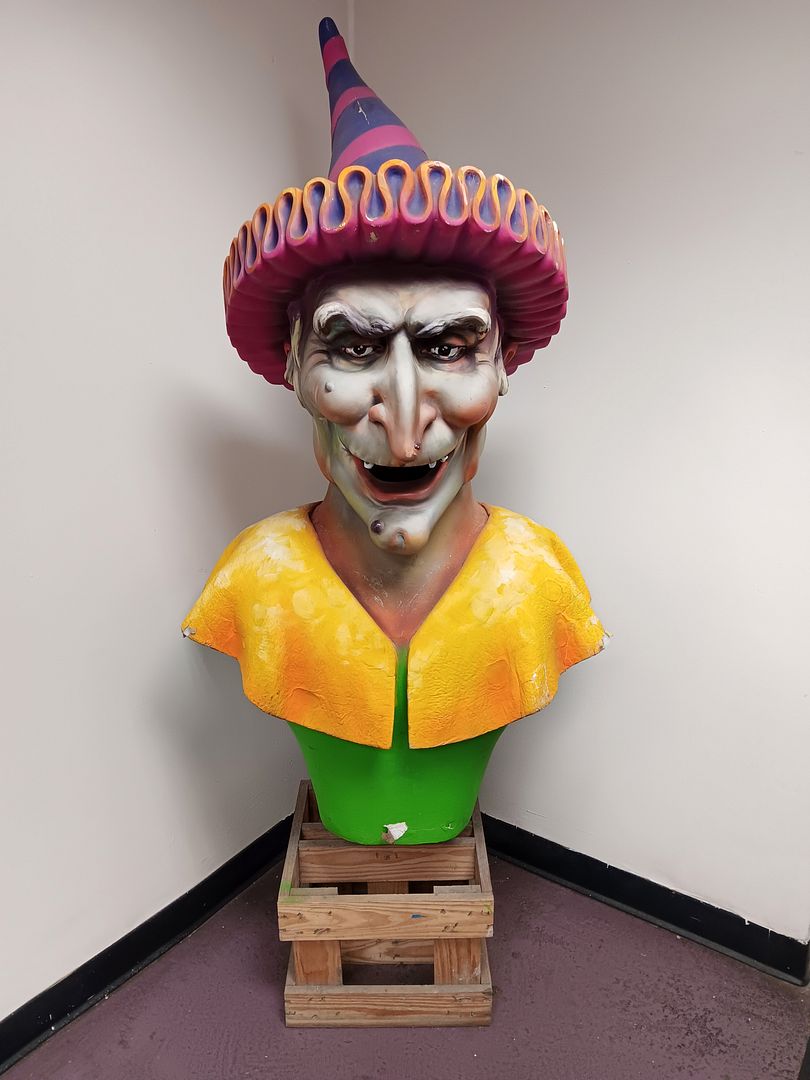
Located at the south end of the New Orleans Convention Center, Mardi Gras World is essentially a tourist destination that doubles as a factory tour and a museum of past float artifacts.
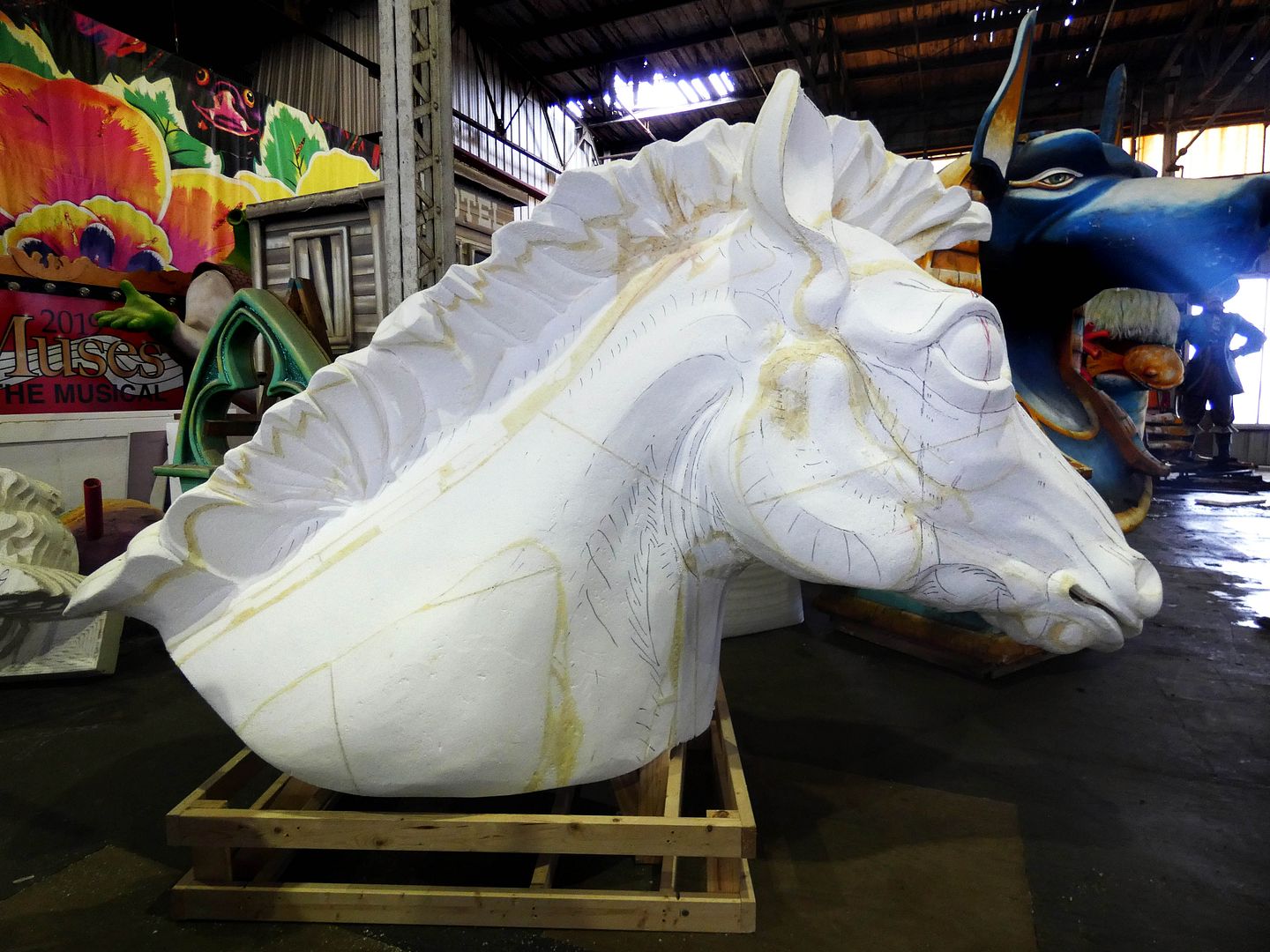
You can see where artists carve and sculpt glued layers of styrofoam into human and animal figures, securing them with armature, covering them in papier-mâché, and then painting them (sealing them with a protective coating, like resin).
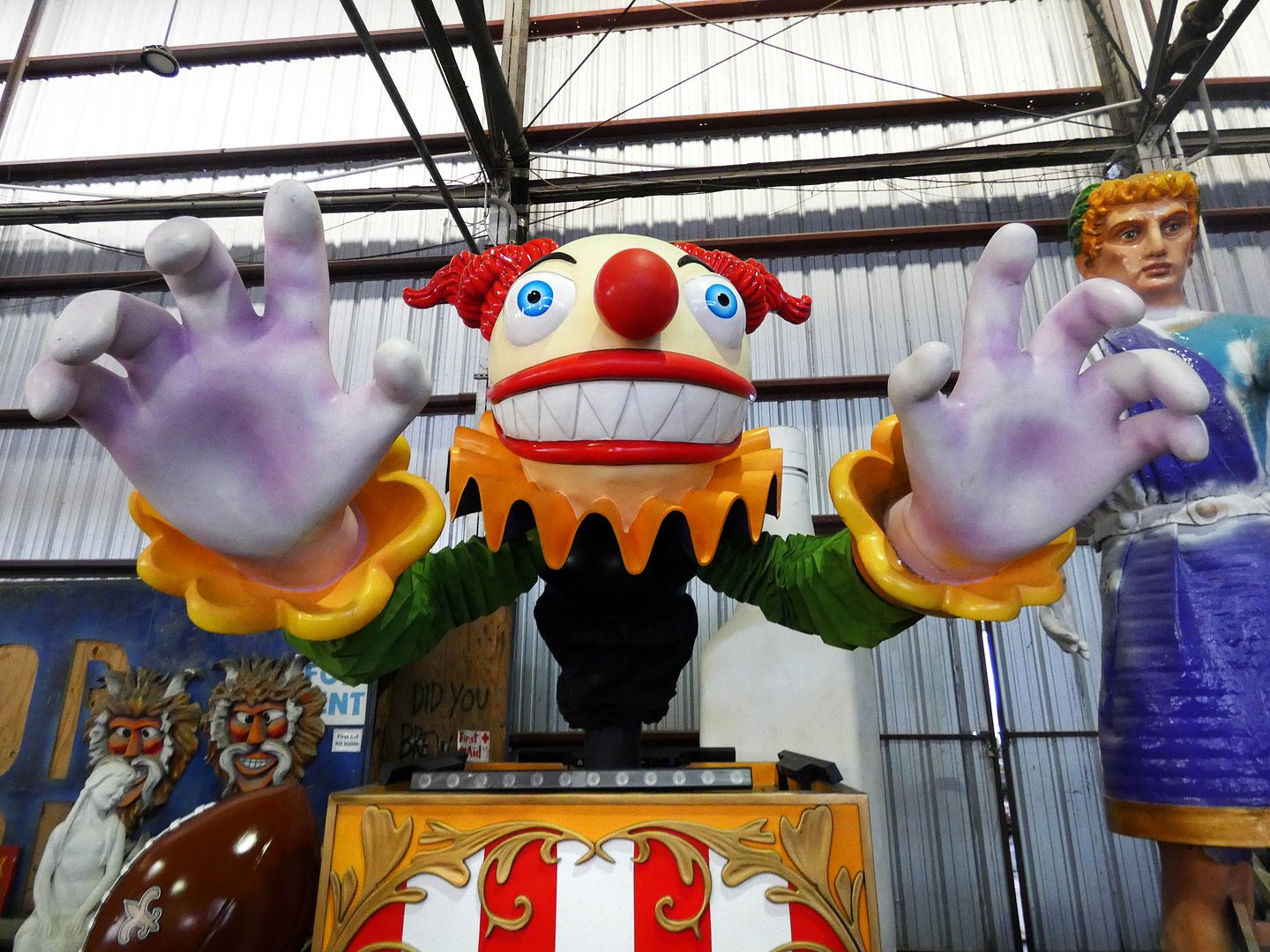
It's a full-time, year-round job for the float builders, who also create both styrofoam and fiberglass props for other parades (like the Mummers Parade in Philadelphia), theme parks, the Super Bowl, Hollywood productions, and various other clients.
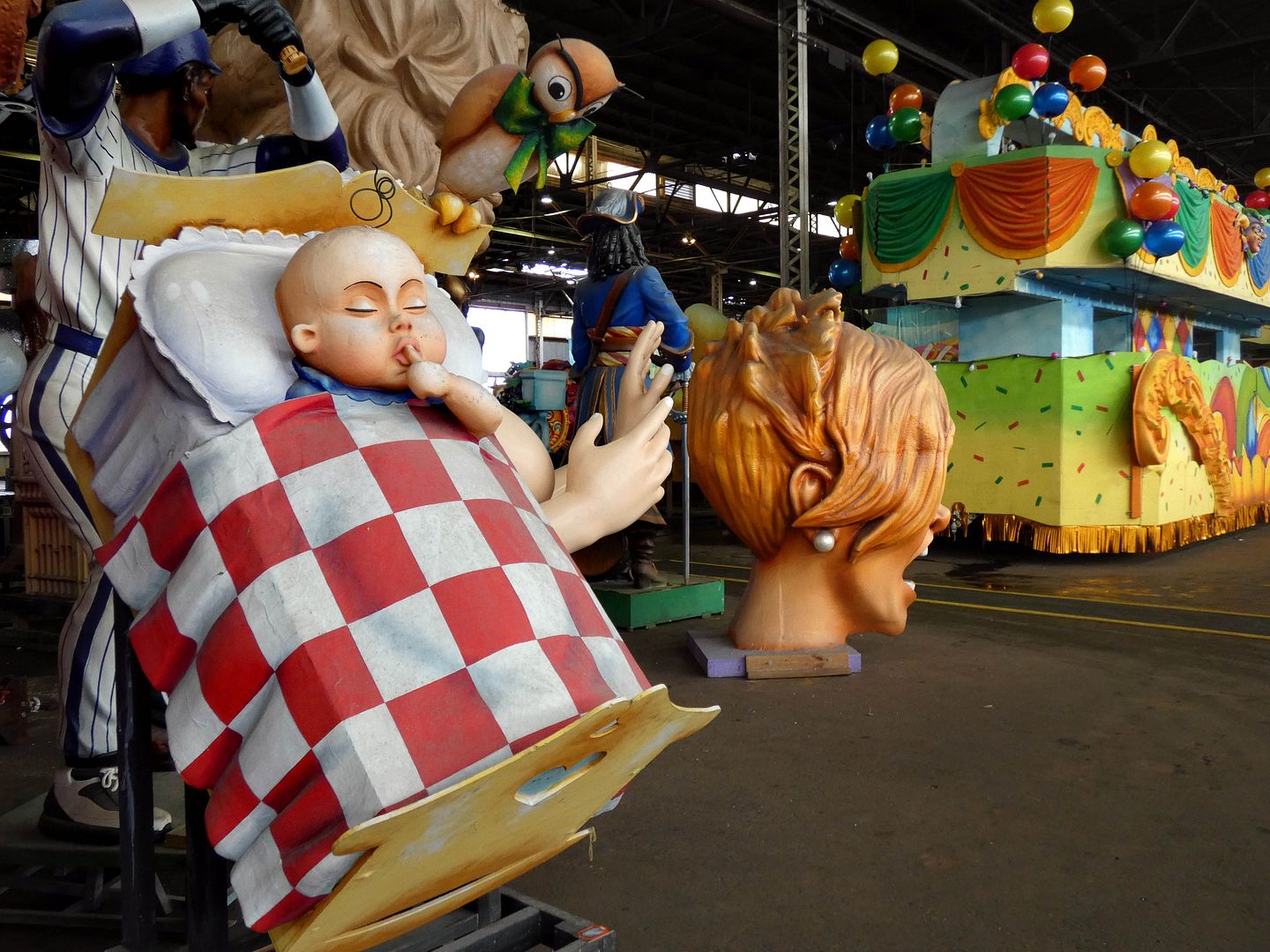
But the New Orleans carnival season alone could keep them pretty busy, since the festivities begin January 6 (the Epiphany/Three King's Day)...
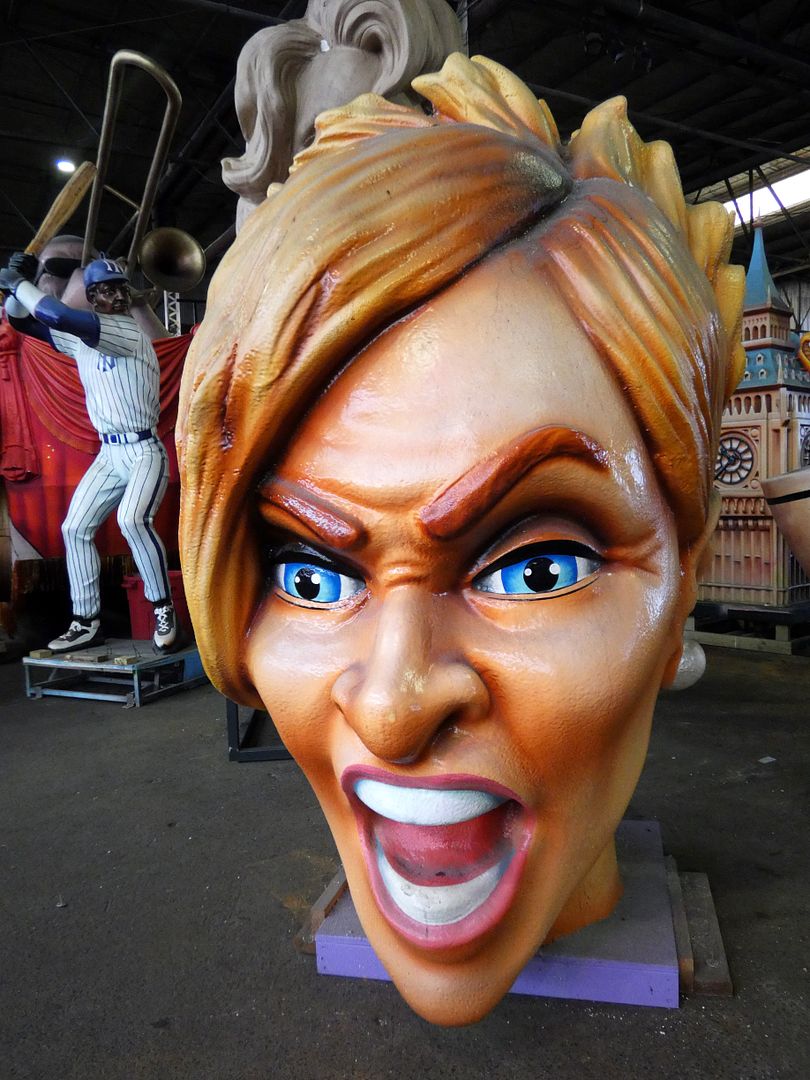
...and continue until the day before Ash Wednesday (a.k.a. Fat Tuesday, which could be anytime between mid-February until early March, depending on when Lent—and therefore Easter—lands).
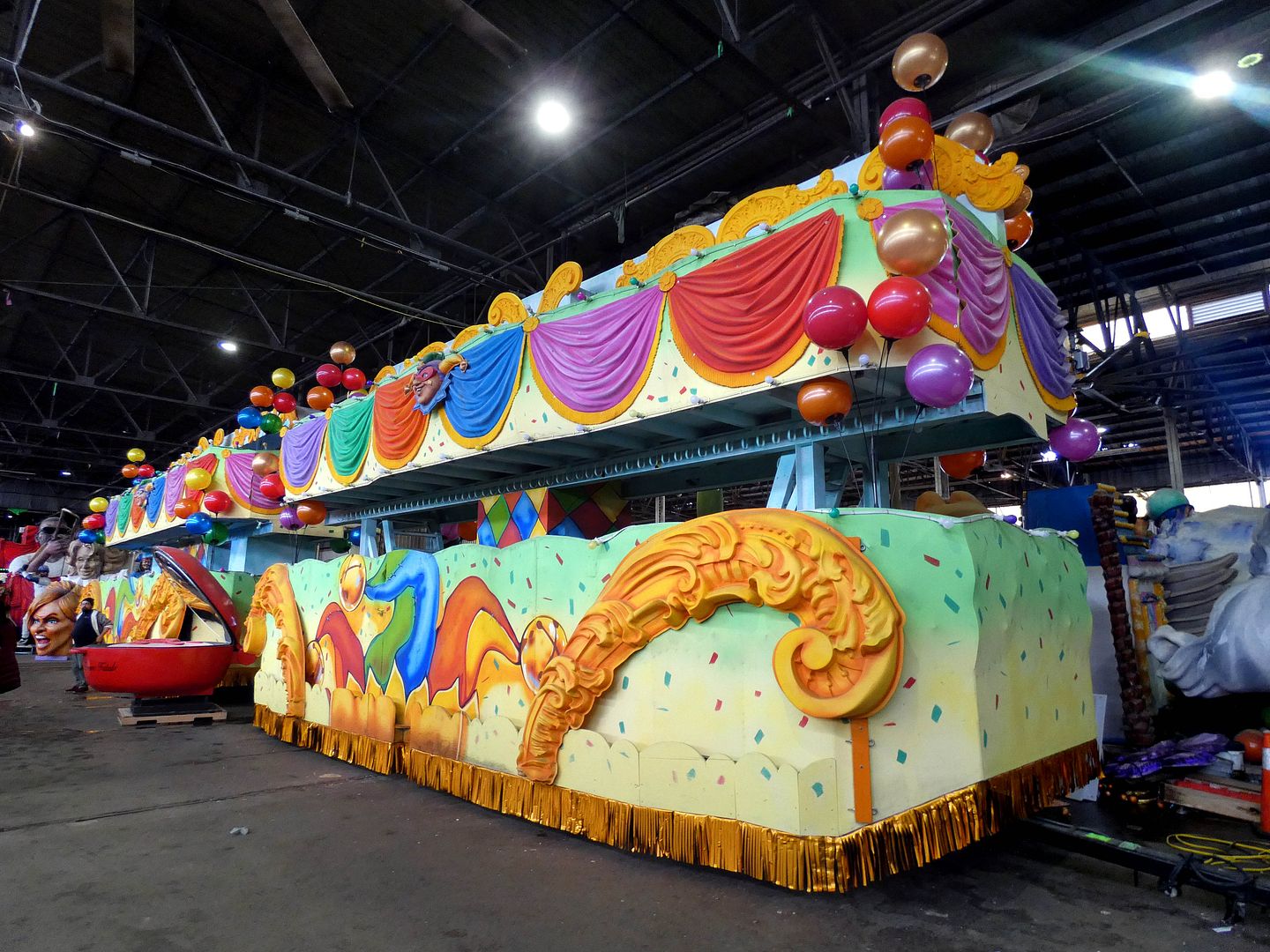
Besides, there isn't just one Mardi Gras parade in New Orleans. There's more than a dozen of them—each with its own theme, which changes every year, and each with a minimum of 14 floats.
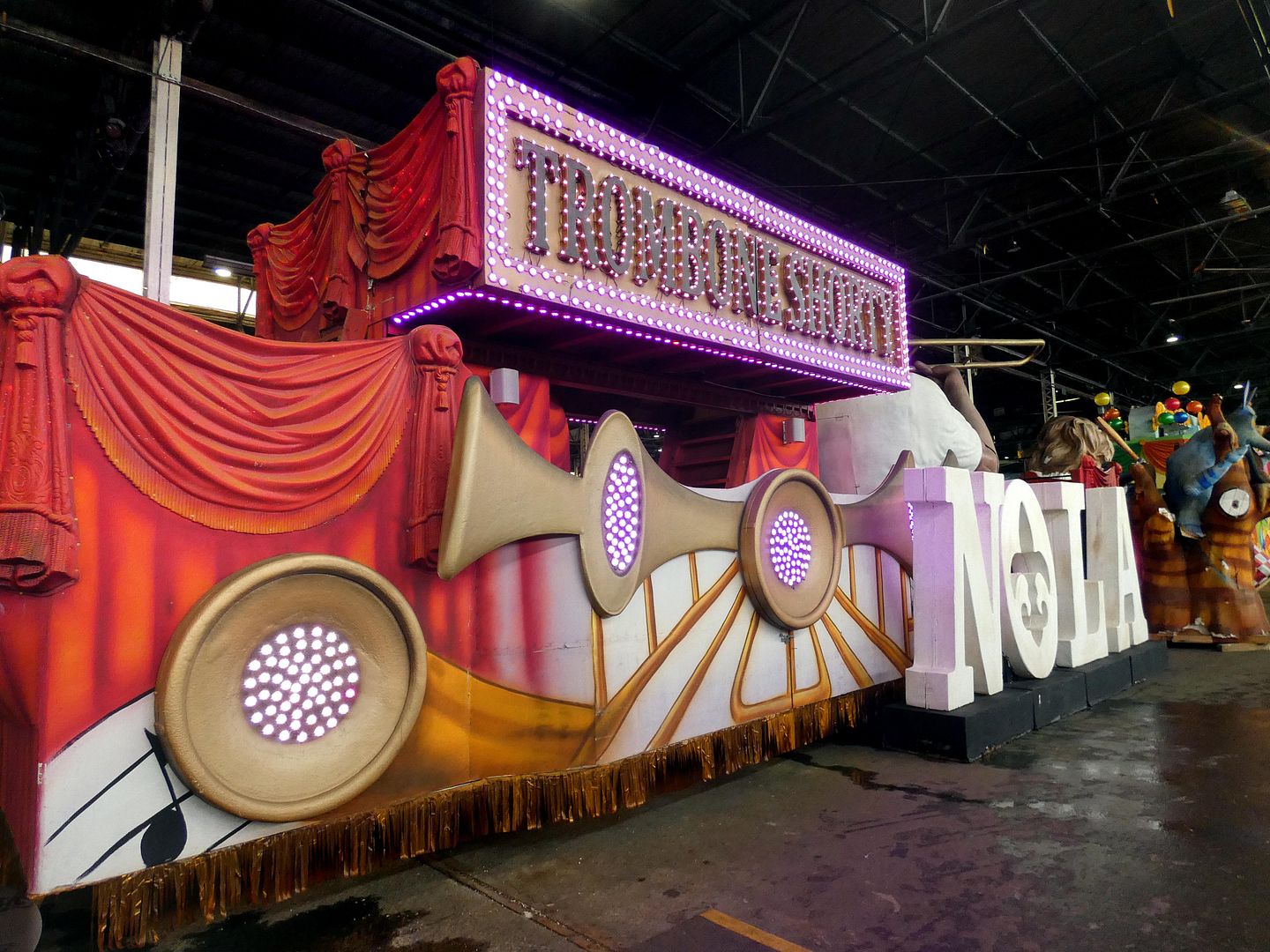
Kern Studios was instrumental in creating the monumental-scale floats you see on the streets of New Orleans today, which were inspired by the pageantry of European traditions (like Carnevale di Viareggio in Italy). Now NOLA too is a parade destination on a global scale.
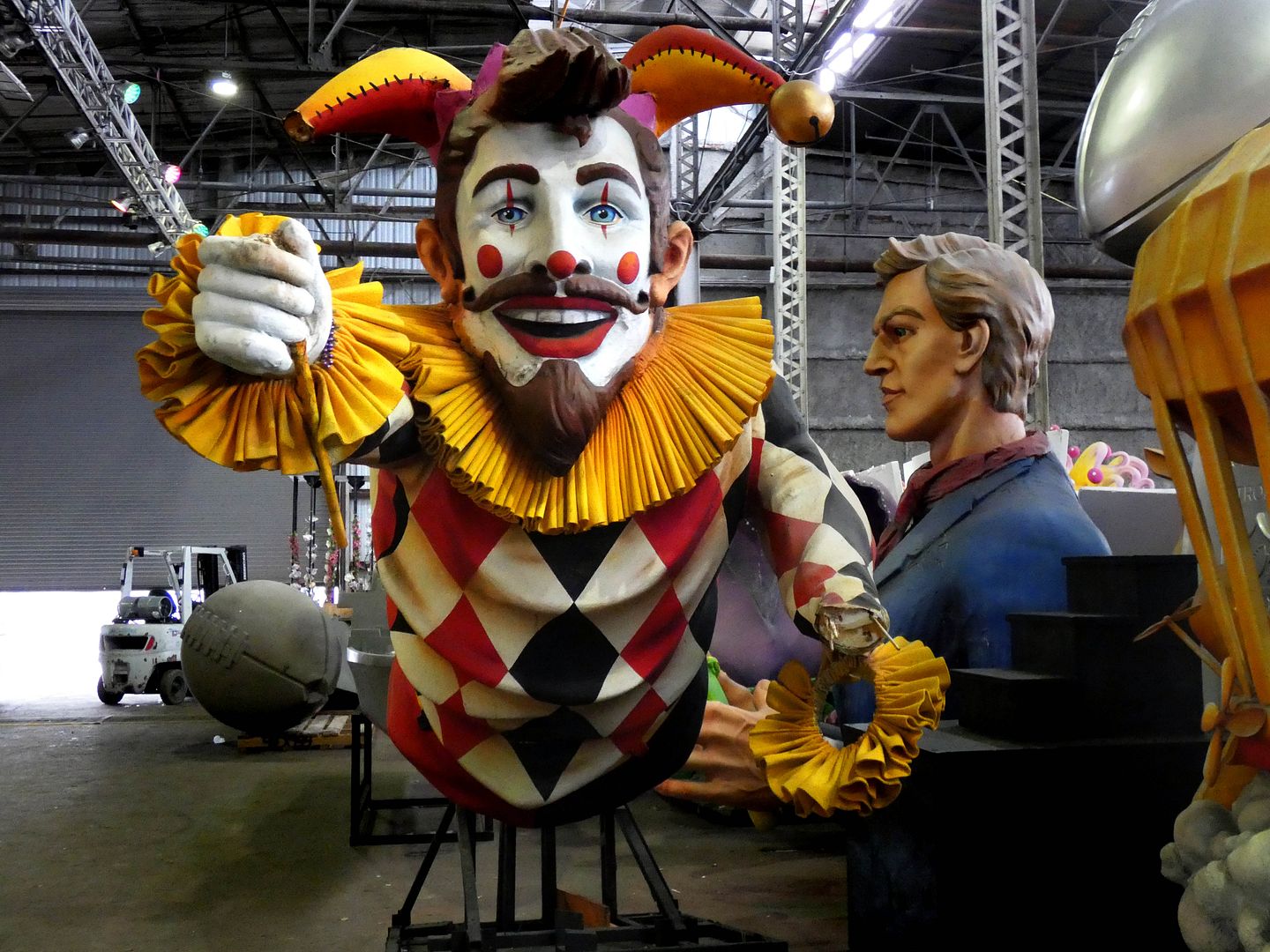
Of course there's some general iconography that's consistent from year to year, like the court jester with his pointy hat.
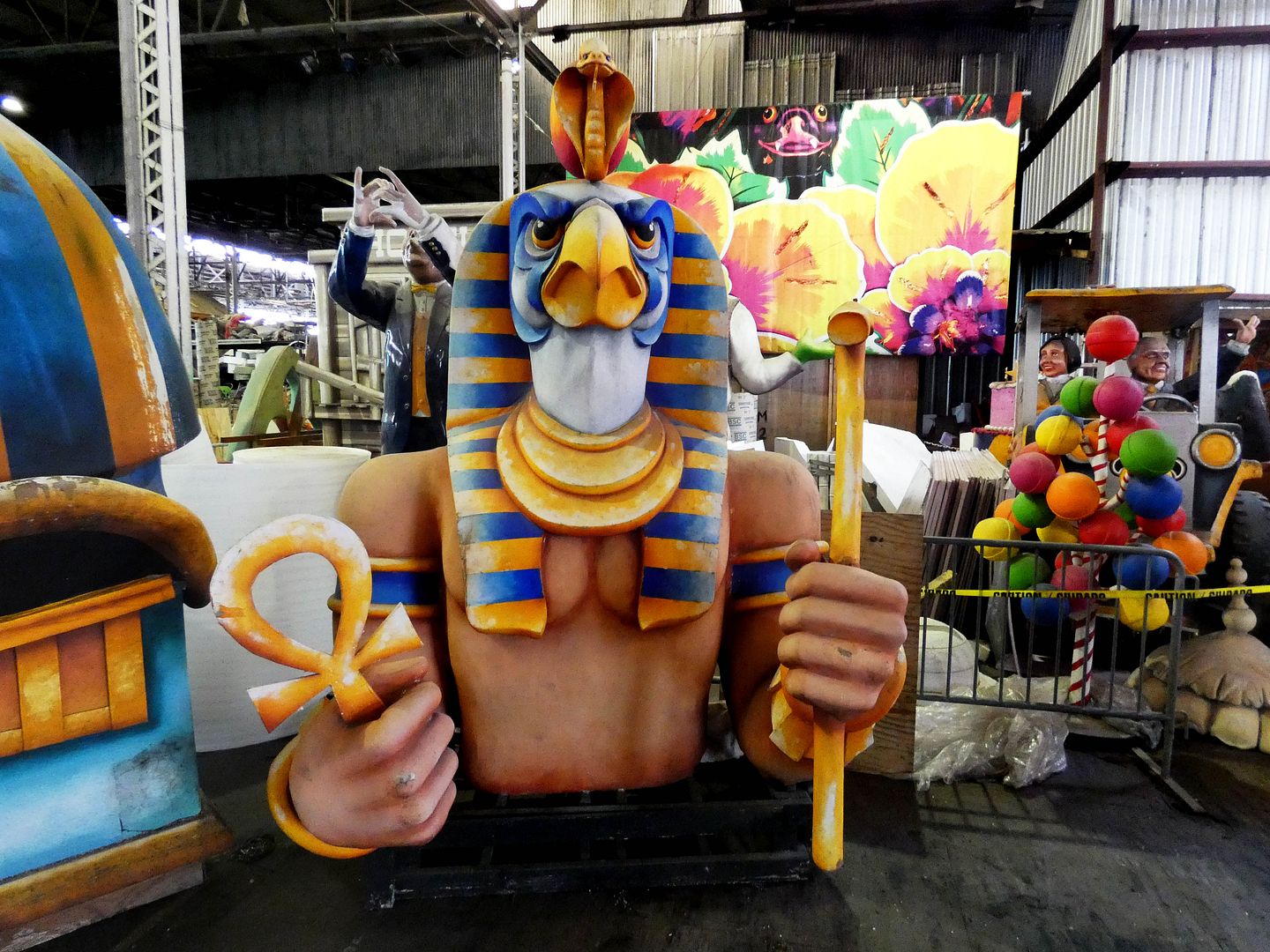
But sometimes there's also Egyptian (like the figure above, which I think is Horus even though there is a float crew called the Krewe of Thoth)...
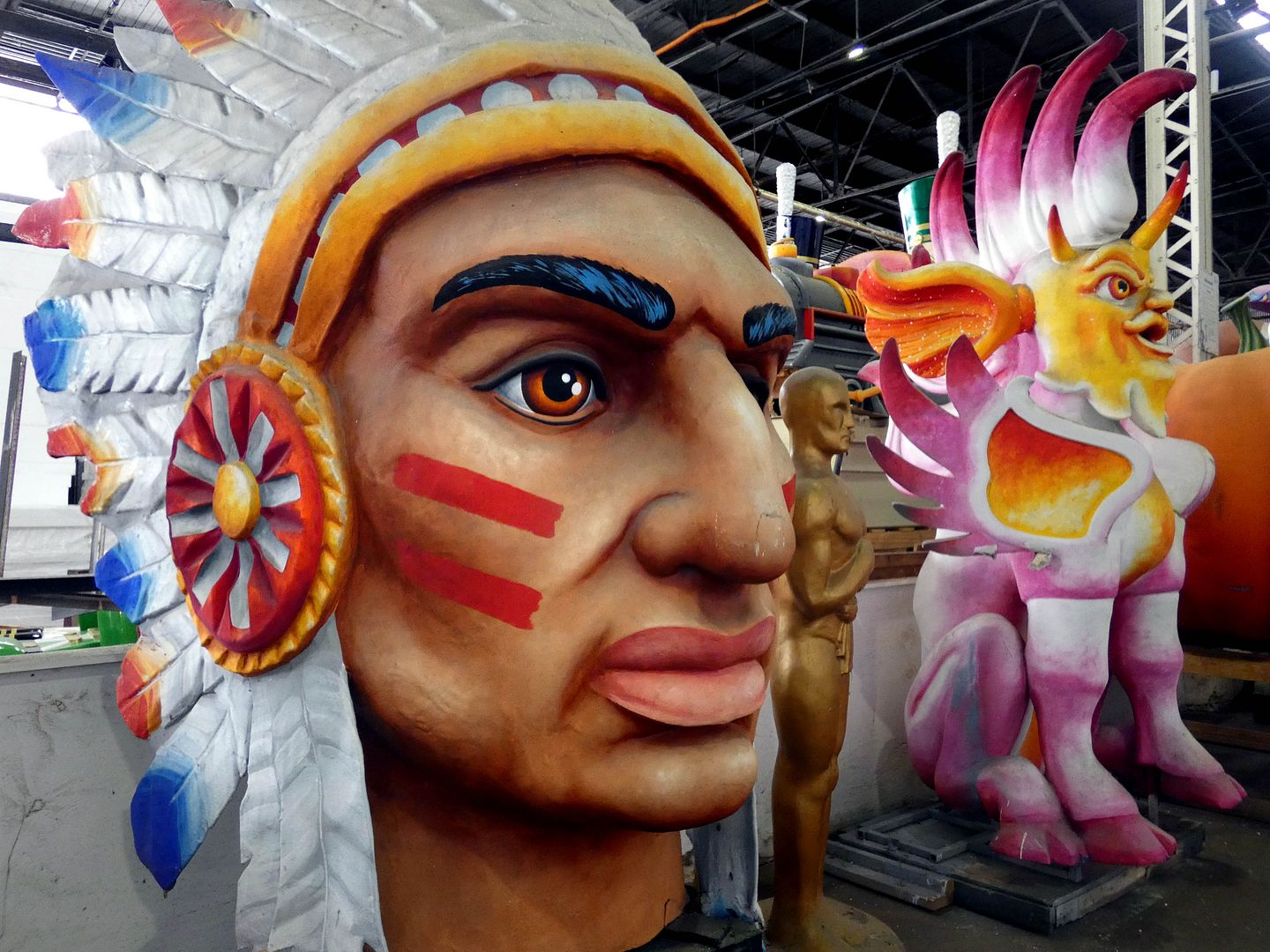
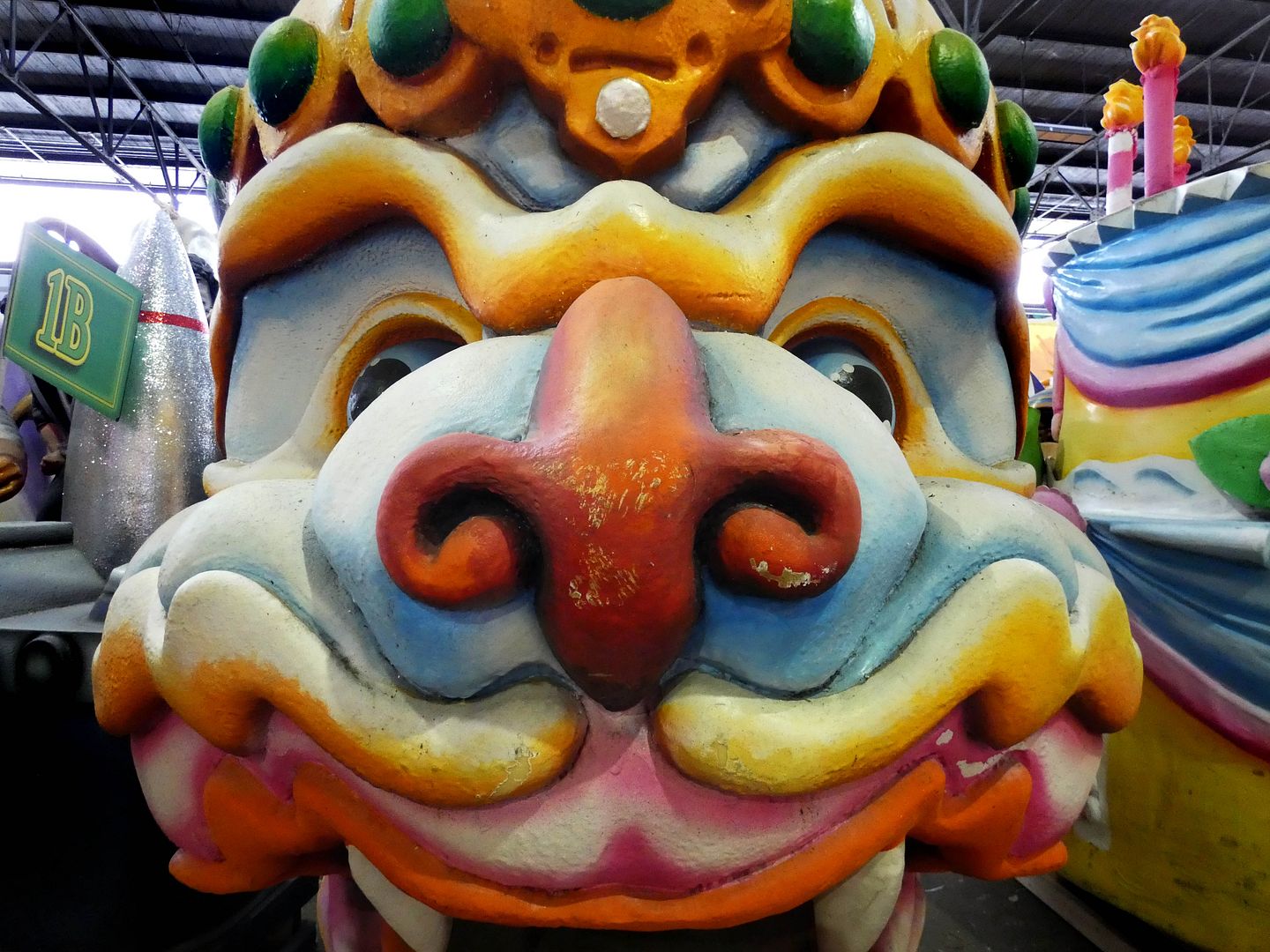
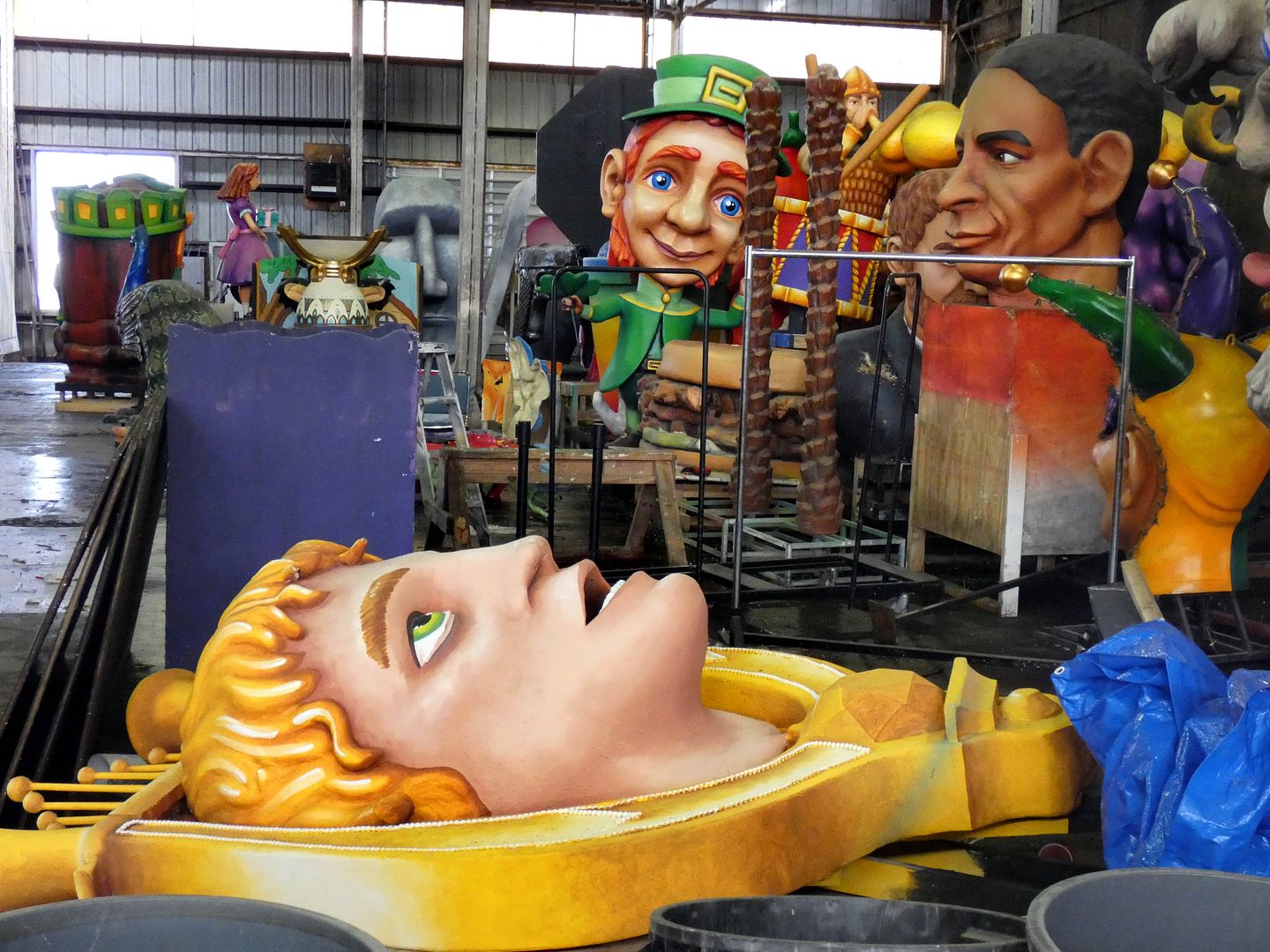
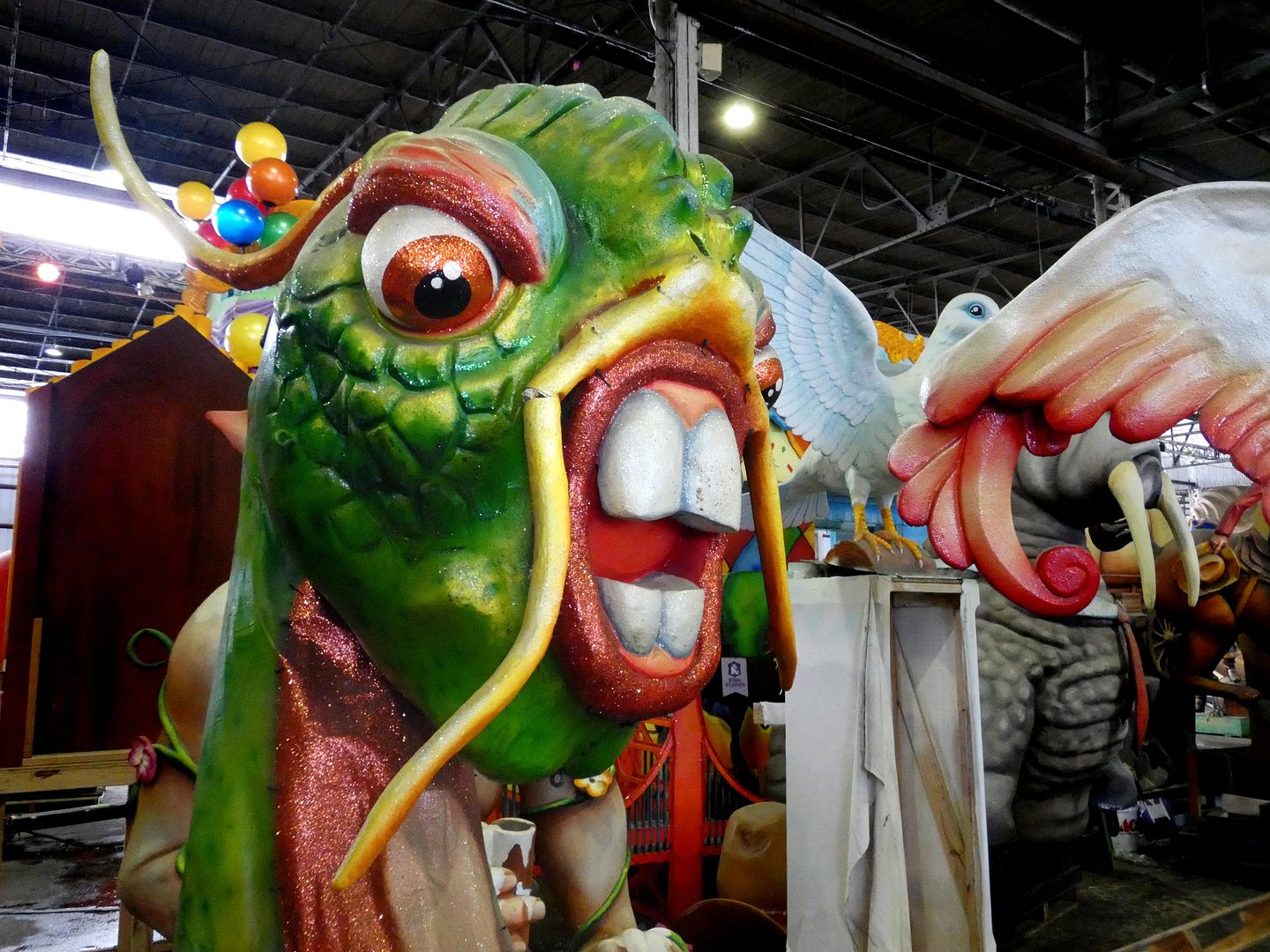
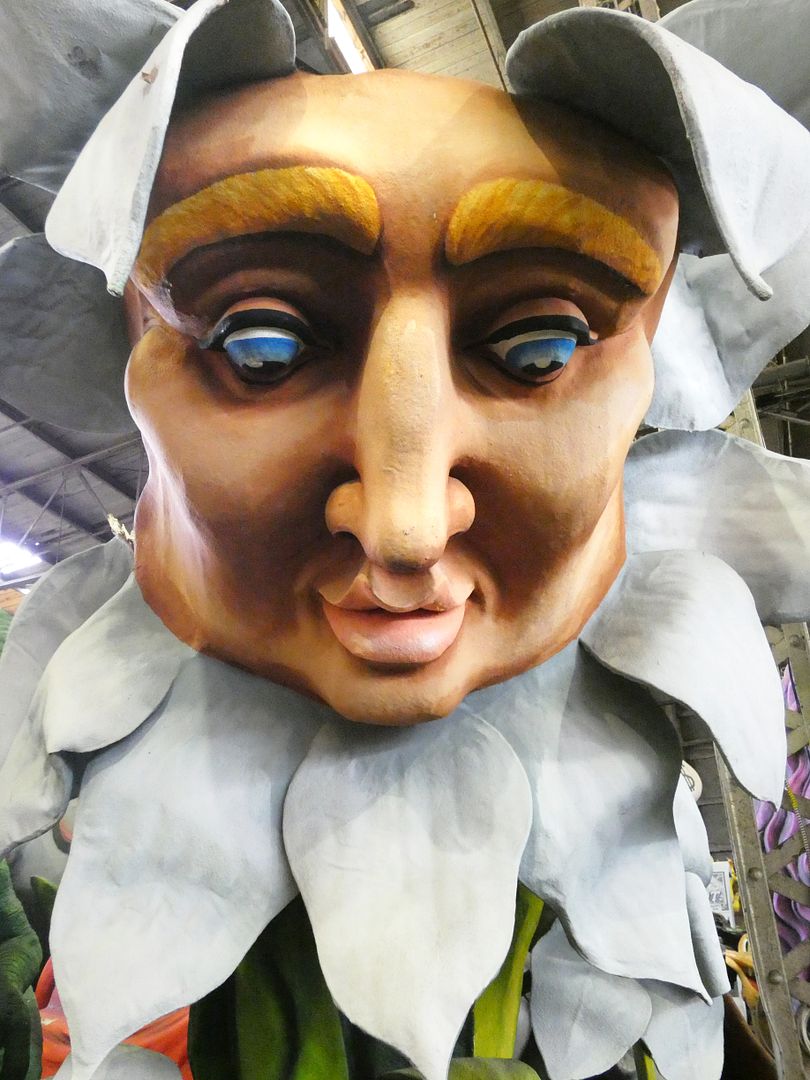
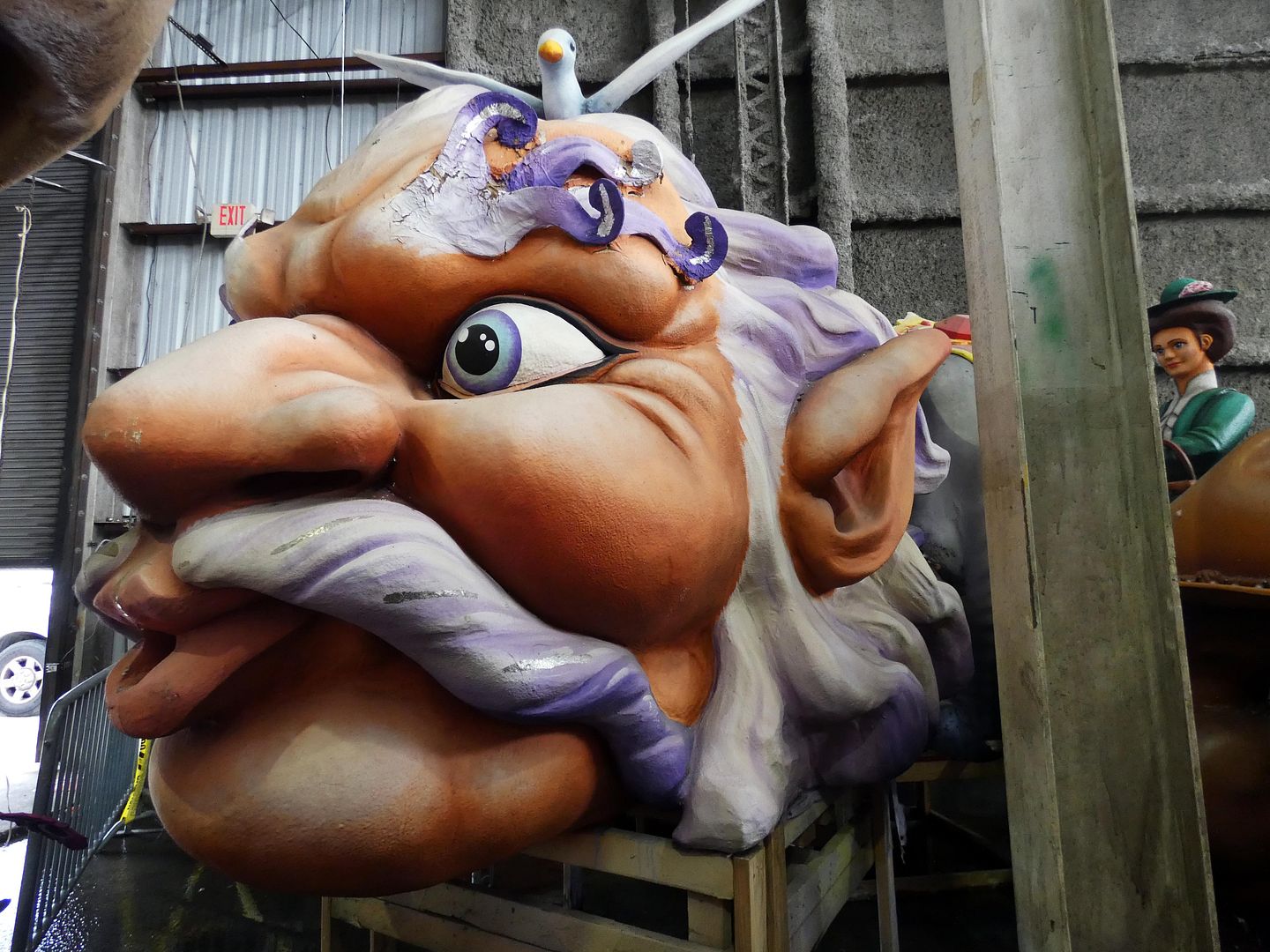
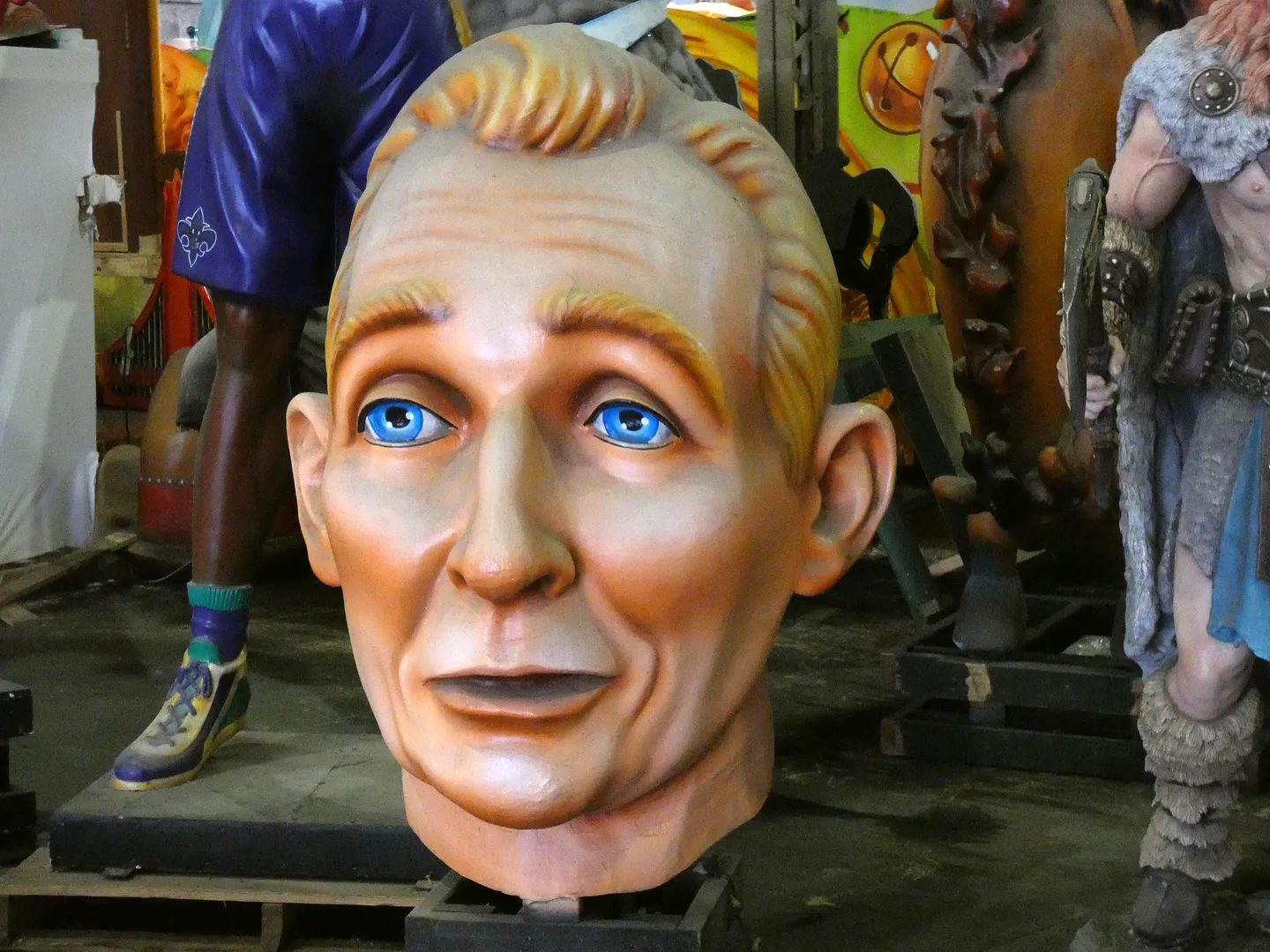
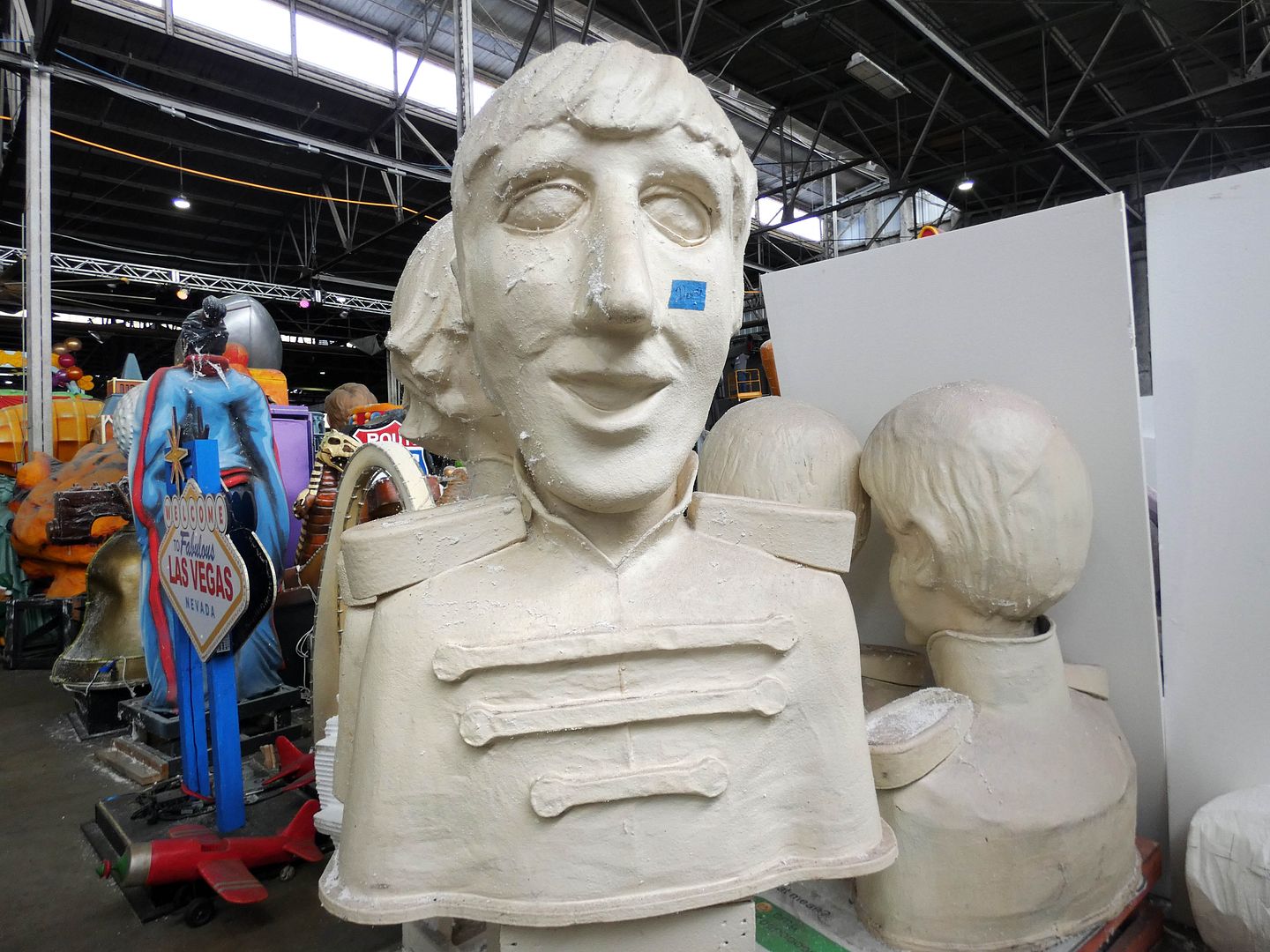

...Native American...

...or Chinese influences.

Kern Studios has 12 warehouses and reuses old figures when it can, so the selection of float figures on display on the Mardi Gras World warehouse floor could change from visit to visit.

I don't know if any of them are meant to be seen so up close...

...because they're all pretty terrifying (although delightfully so).

There's a healthy dose of whimsy, too, like a gust of wind being blown up Marilyn Monroe's skirt. (I assume these were from two different floats, but it shows some creativity in their display at Mardi Gras World.)

I think the guy above is meant to be Fred Astaire...

...and these figures (above) the Beatles from their Sgt. Pepper era...
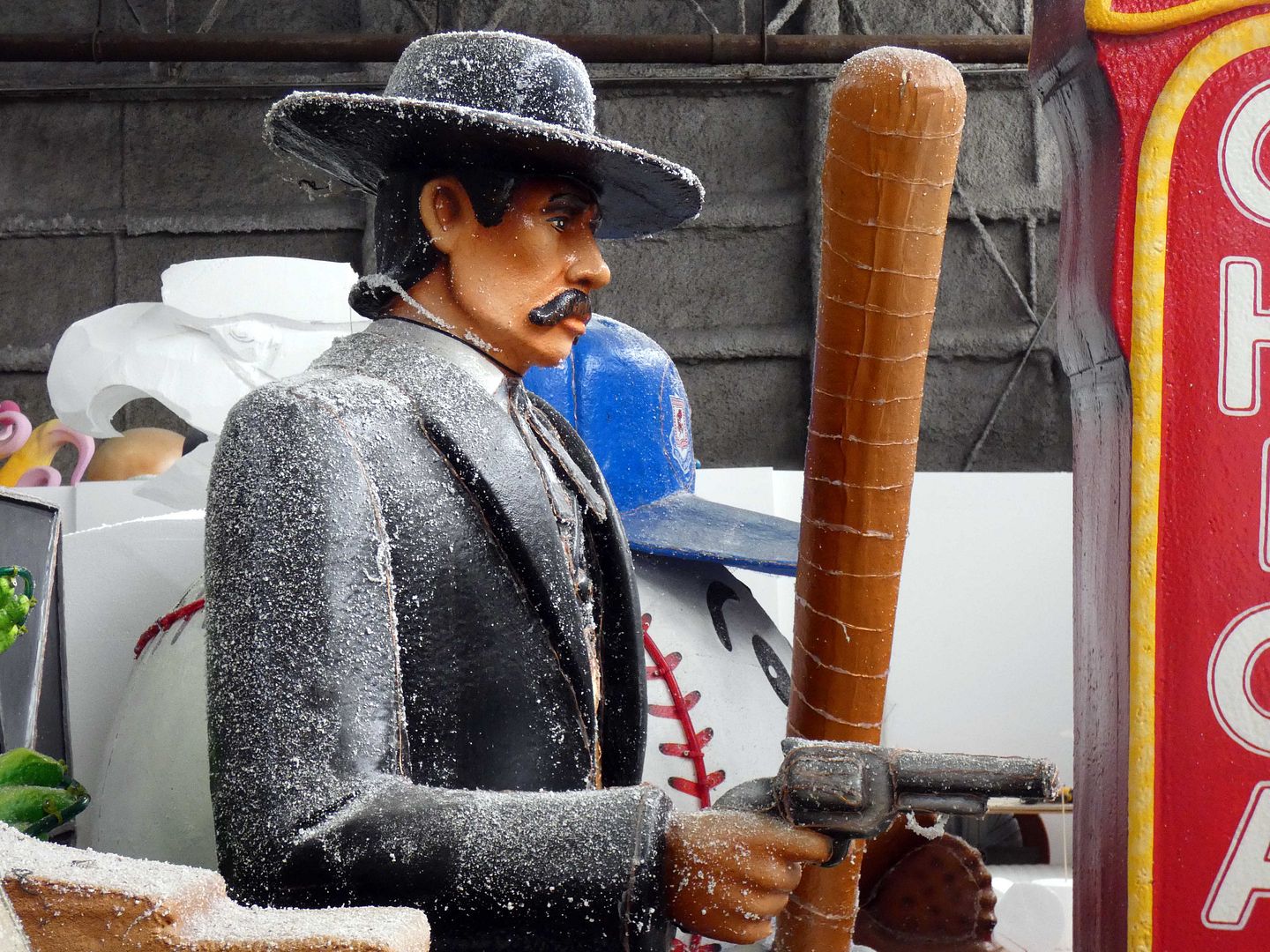
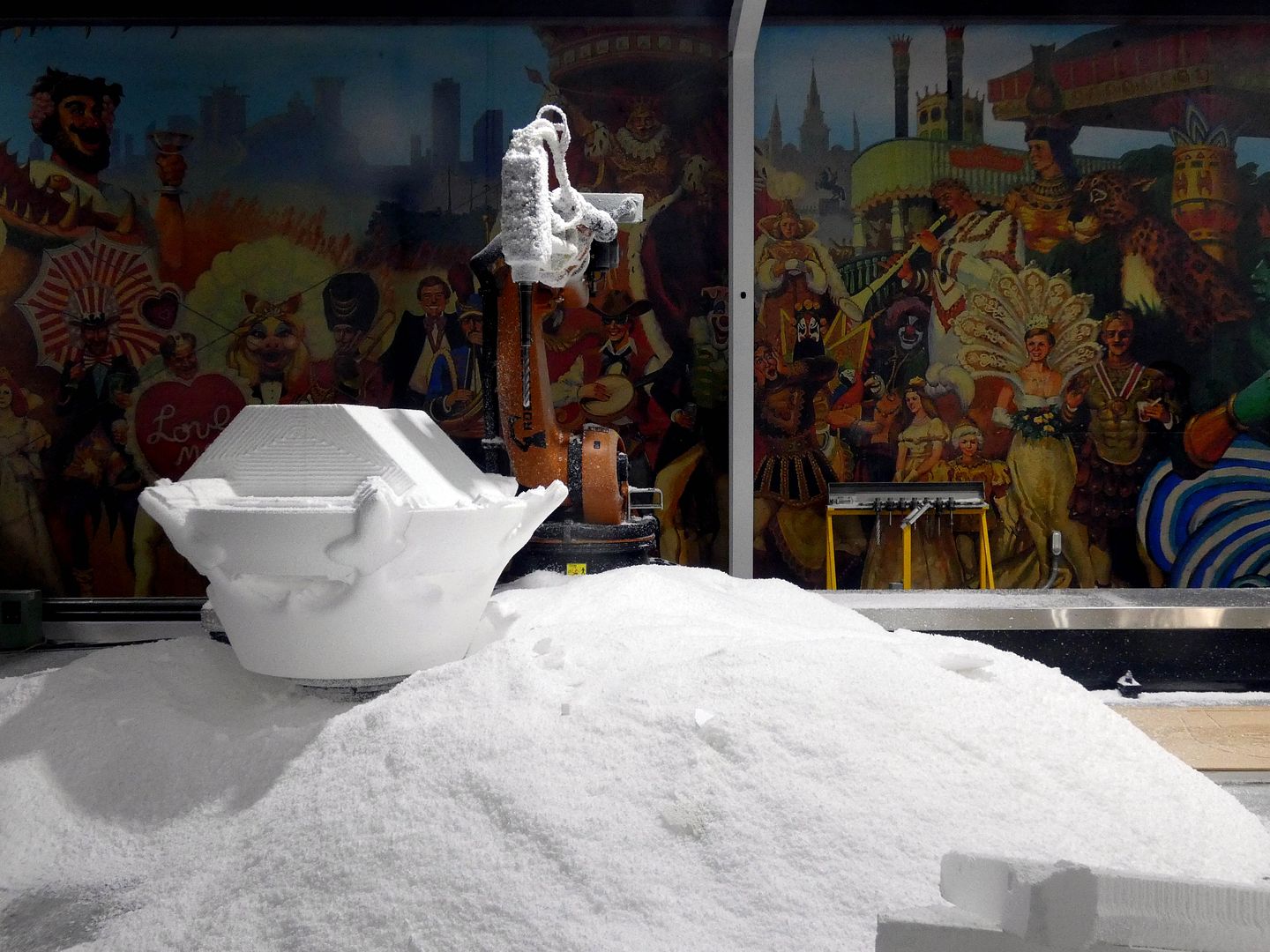
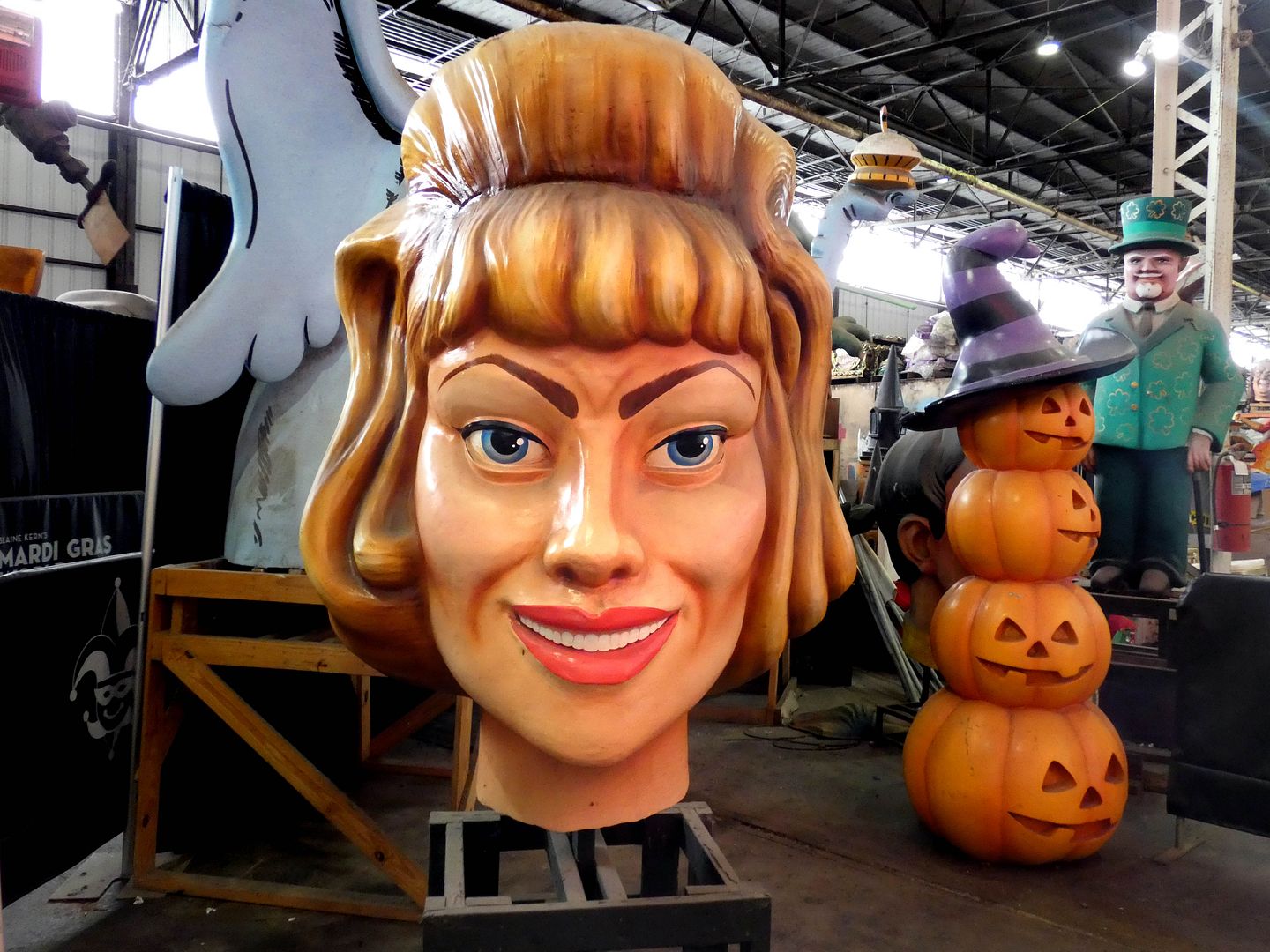

...but I couldn't figure out which Western gunslinger this was supposed to be (although based on the mustache alone, maybe Wyatt Earp?).

Now, float-building has changed over the last 90-some-odd years, when Roy Kern and his son Blaine built the first Mardi Gras float by hand in 1932. Now under the leadership of Blaine's son Barry Kern, the studio gets some help from digital 3D models and a carving robot named Pixie (above).

The "Robot Room" is on display alongside the supersized works of art, which the social clubs that run the parades simply rent from Kern Studios.
Now I feel like I've got to see some of these float figures in action—which means I may need to go back to New Orleans at some point for a Mardi Gras parade or two.
Related Posts:

No comments:
Post a Comment